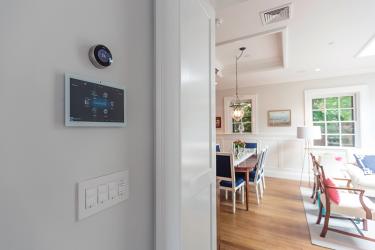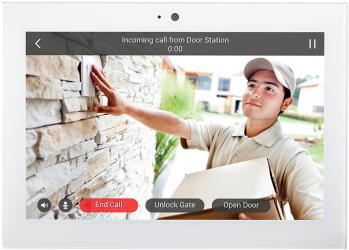A lone woman lugging a baby and groceries ducks out of her lighted garage. As the door shuts behind her, the sidewalk illuminates of its own accord and the gate swings wide. She eases through it, hearing her front door unlock with an audible click. This and a live security camera ensure woman and child an anxiety-free passage to the sanctuary of their home. Sultry Coltrane music fades up, and she smiles …
Until recently, machines and objects that could interact with humans were the stuff of science fiction. Even now, many homeowners picture automation as the domain of wealthy dreamers with cash to burn, unaware of how quickly, easily and inexpensively the average Joe can remotely access and operate vital home functions. Thanks to the proliferation of cloud technology, most homeowners can program everything from lighting to alarms to the electric stove with the touch of a button on their smartphone or tablet computer.
Called smart home automation, this technology has exploded in the last decade or so with big-box home improvement stores offering DIY installation kits and applications for specific uses. A handy individual could, for example, install a light or HVAC thermostat to operate these functions remotely. However, an inexpensive professional system broadens that reach to multiple devices that do whatever the user wishes them to do—all with only one app. No more stumbling into a dark house. No more accidental alarms, and no more leaving the heat at full throttle after a frosty morning.
“With a system that’s professionally installed, you can create these events, or ‘scenes,’ that integrate multiple functions,” says David Young, president of The Sound Room in Chesterfield, which specializes in sound and whole-home technology. “With the right system, a consumer might even save enough [on energy bills] to cover the cost of the system. In the case of the landlord with tenants who leave A/C at 60 degrees with the windows open, the system could pay for itself in a matter of months.”
Today’s internet-based smart technology is relatively simple to install, flexible and user-friendly. Even modest systems can monitor and regulate heating and air conditioning to save energy when no one’s home, or notify of broken pipes in real time. But before Young drills into a customer’s automation wish list, he starts by gauging internet service, inventorying networked devices in the home and prioritizing bandwidth.
“It’s important to start with a good network—a good backbone—because it’s heavily dependent on wireless technology. That’s always where I start the conversation,” Young says. “Once there’s a strong network, anything that can be switched on can be controlled. You can get an automated security system, electric door lock, lighting control, a smart thermostat and a front-door camera for a home up to 2,500 square feet for around $1,000.” That price point is bound to be (automated) music to consumers’ ears.
Resources
David Young, The Sound Room, 636-537-0404









